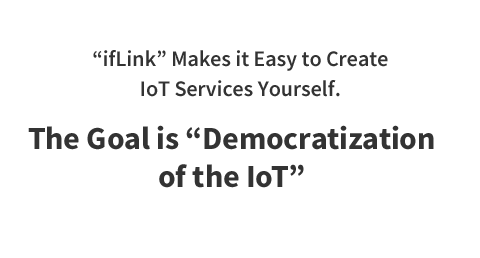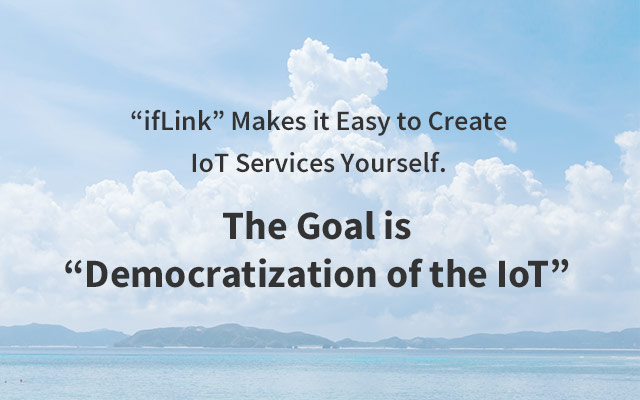
- Vol.
- 34

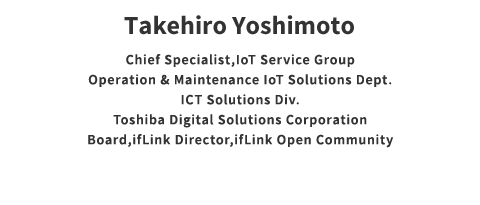
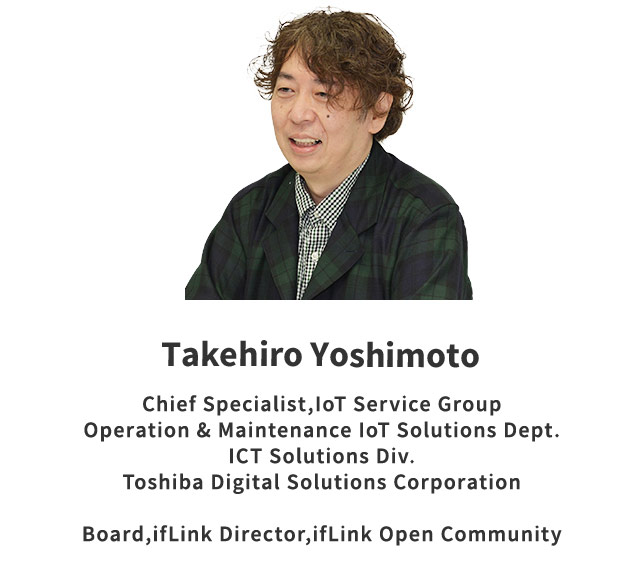
The Toshiba Group engages in various activities with the goal of creating a richer society. “ifLink,” which was developed by Toshiba Digital Solutions and makes it possible to create your own IoT services, is one example of these activities. Our goal is “Democratization of the IoT.”
We want to make it easy and inexpensive for anyone to use the IoT right away. This will lead to various IoT services being created on the user side. To achieve this, ifLink needs to be widely used through different companies, organizations, and schools.
This is why Toshiba founded “the ifLink Open Community.” This article presents an overview of ifLink and introduces the ifLink Open Community which is promoting it.
-
DIY Style IoT

-
Establishing “the ifLink Open Community” to accelerate the widespread use of ifLink

-
The COVID-19 Working Group tackles the greatest issue facing society today

-
Sparking inspiration through IF-THEN brainstorming workshops

-
Plans for expanding usage through the authentication, the recipe site, and more

 DIY Style IoT
DIY Style IoT
In business situations, IoT systems are becoming more widespread and being put to greater use. ICT companies like Toshiba Digital Solutions build IoT systems based on client requests and offer IoT services. On the other hand, IoT services is beginning to be used in personal life as well. Unfortunately, these end users are using the services provided by ICT companies and they have little freedom.
“We wanted to enable users to easily combine various components themselves to create their own IoT services.” To turn this desire into reality, we developed “ifLink.” ![]() ifLink is an IoT platform that modularizes IoT devices and web services, making it easy for anyone to combine devices and services freely and create convenient systems.
ifLink is an IoT platform that modularizes IoT devices and web services, making it easy for anyone to combine devices and services freely and create convenient systems.
For example, specific conditions (IF) and actions (THEN) could be combined, such as “IF the door is opened, THEN notify a family member” or “IF someone has a fever, THEN send a notification,” and the related devices and services could be relayed by devices such as smartphones, tablets, and home gateways using Bluetooth, Wi-Fi, or other short-range wireless communications to create an IoT service. (Fig.1)
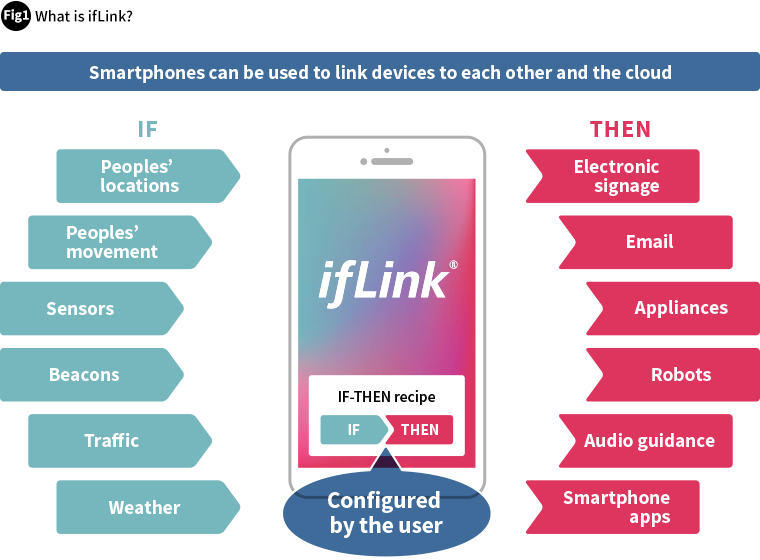
In the past, this type of integration required software development in order to operate the devices and services.
ifLink, however, requires no such software development. Using an app called an “IF-THEN Rule Editor,” it can simply realize IoT by setting to link the selected device to the service wanted to use. ifLink handles all of the difficult parts. Each module (device and service) has its own communication methods, protocols, and Application Programming Interface (API*), so how do they connect to each other? This is achieved by adding tiny individual applications called microservices that connect the modules to ifLink. Microservices absorb the unique elements of each module, making it possible for them to connect with each other as ifLink components.
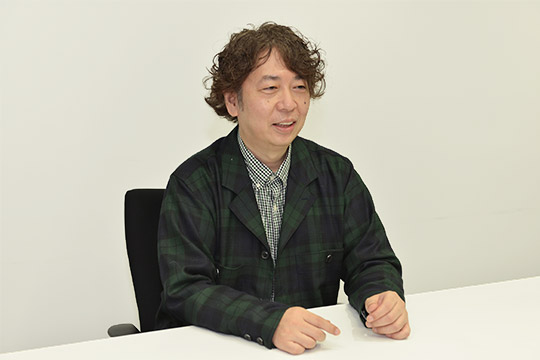
To make it even easier to configure IF-THEN rules, ifLink provides “IF-THEN cards.” These make it possible to configure rules without using the IF-THEN rule editor.
User lines up each card for IF and THEN, left-to-right, and shoot them with the smartphone camera. The information extracted from the photo is sented to the ifLink cloud and used to create IF-THEN rules. The created rules are then sent to the smartphone, making it possible to control operation from the smartphone itself, such as the aforementioned “IF the door is opened, THEN notify a family member.” This is one of ifLink’s greatest features (Fig.2).
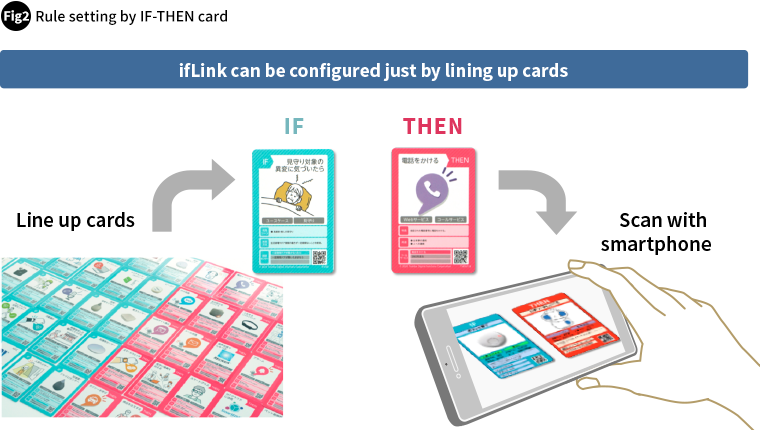
The number of modules (devices and services) compatible with “DIY style IoT” ifLink is increasing. IF modules include devices such as sensors, buttons with built-in communication SIM cards, and beacons, and services such as speech recognition. THEN modules, which perform actions, include devices such as communication robots, communication wristbands, and infrared remote controls, and services such as speech synthesis, IoT data transmission to cloud, LINE messaging, email, and map display.
 Establishing “the ifLink Open Community” to accelerate the widespread use of ifLink
Establishing “the ifLink Open Community” to accelerate the widespread use of ifLink
We are trying to use ifLink, which connects various devices and services, to “democratize the IoT.” To democratize the IoT is to realize the IoT that satisfies “the three As” – “Availability,” “Agility,” and “Affordability.” In order to achieve this, it is important that there be an extensive lineup of devices and services that can connect to ifLink. This isn’t something the Toshiba Group can accomplish on its own.
That’s why in March 2020, we established the ifLink Open Community![]() (Fig. 3) to bring together various companies, increase the number of supported modules, and provide ideas regarding potential usage methods through collaborations with schools and other organizations.
(Fig. 3) to bring together various companies, increase the number of supported modules, and provide ideas regarding potential usage methods through collaborations with schools and other organizations.
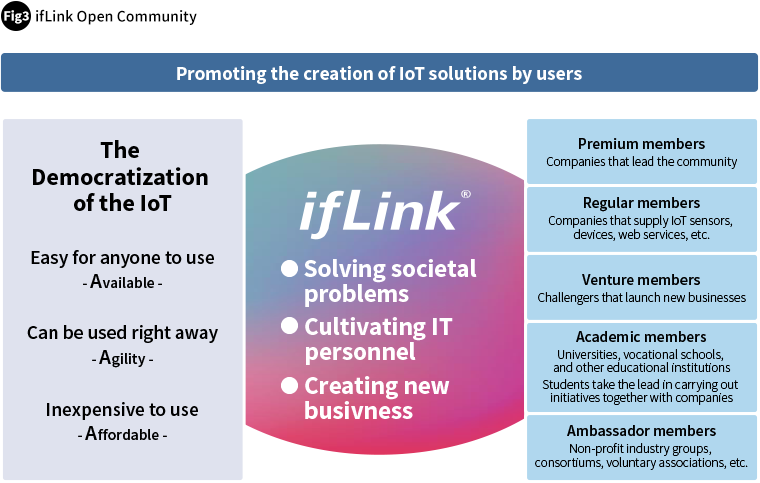
Over 100 companies are already members of the ifLink Open Community. The community now has 14 working groups, tackling issues such as solving societal problems, cultivating IT personnel, and creating new business.
 The COVID-19 Working Group tackles the greatest issue facing society today
The COVID-19 Working Group tackles the greatest issue facing society today
The most active of those working groups is the COVID-19 Working Group. The members of this working group come from various companies, from major corporations to sensor suppliers and application developers. They have identified issues and challenges related to avoiding the “three Cs” (closed spaces, crowded places, and close・contact settings), new work lifestyles, and economic revitalization, and are testing solutions.
One of these solutions is “AntiCluster,” ![]() (note inc.) an app that counts how many people the user has been in close proximity to and visualizes their activity risk. Beacon signals sent from other peoples’ smartphones are used to determine the number of nearby people and how far away they are. This makes it possible to measure and visualize three Cs risk and provide individualized warnings about user behavior. It can also be linked to a point system to issue points to people who have been determined to have engaged in safe behavior for multiple days.
(note inc.) an app that counts how many people the user has been in close proximity to and visualizes their activity risk. Beacon signals sent from other peoples’ smartphones are used to determine the number of nearby people and how far away they are. This makes it possible to measure and visualize three Cs risk and provide individualized warnings about user behavior. It can also be linked to a point system to issue points to people who have been determined to have engaged in safe behavior for multiple days.
The next prototype example is an app for detecting people with fevers. ![]() (note inc.) Smartphones with infrared cameras are combined with facial recognition technology to display thermographic images and measure the temperatures of peoples’ faces. ifLink connects the detection of fevers (IF) with actions to take when fevers are detected (THEN), such as showing information to the person with the fever or sending a notification to a manager. Fever detection and subsequent actions are performed automatically and require only a smartphone, so this It is easy to install and use in small private shops and eateries, small and medium-sized enterprises, schools, day care centers, and the like.
(note inc.) Smartphones with infrared cameras are combined with facial recognition technology to display thermographic images and measure the temperatures of peoples’ faces. ifLink connects the detection of fevers (IF) with actions to take when fevers are detected (THEN), such as showing information to the person with the fever or sending a notification to a manager. Fever detection and subsequent actions are performed automatically and require only a smartphone, so this It is easy to install and use in small private shops and eateries, small and medium-sized enterprises, schools, day care centers, and the like.
The third prototype example is a system that uses CO2 sensors to detect closed spaces, helping promote the implementation of countermeasures. In this app prototype, CO2 sensors are combined with ifLink so that when the CO2 level reaches a certain point (IF), an audio alert that says “ventilate the room” plays (THEN), the fan turns on (THEN), and a revolving warning light turns on (THEN).
This activity was presented as an example of co-creation activities of companies facing the COVID-19 response at a meeting of the Anti-Covid-19 Tech Team led by Minister Nishimura.
 Sparking inspiration through IF-THEN brainstorming workshops
Sparking inspiration through IF-THEN brainstorming workshops
Identifying issues and challenges is an important part of producing useful innovations with the IoT. One of the ways the ifLink Open Community produced these insights is through brainstorming sessions which covered everything from idea proposal to concrete solution development. We called these IF-THEN brainstorming workshops. ![]() (note inc.) A topic is decided for each workshop, and participants come up with issues related to the theme and solutions to those issues.
(note inc.) A topic is decided for each workshop, and participants come up with issues related to the theme and solutions to those issues.
These workshops use three types of cards -- “scene” cards that indicated various situations encountered in homes, transportation, factories, and the like, “user” cards that indicated customers, working people, business operators, and the like, and “theme” cards that indicated issues to be addressed, such as efficiency, peace of mind, and energy savings. One of each of these cards is selected at random to determine the topic of the workshop. Participants then engage in discussions regarding the topic, coming up with specific related problems and wishes. IF and THEN cards are then used to come up with potential solutions. The key point is that the idea can be made concrete by giving the selected "theme", and changed and checked the idea on the spot by using the IF-THEN card.
One university is being to have the class in which the idea of an IoT service is created using the IF-THEN card and the idea is considered to be commercialized. IF-THEN cards are also used in actual corporate new hire training. We look forward to even more opportunities being developed to use these cards.
 Plans for expanding usage through the authentication, the recipe site, and more
Plans for expanding usage through the authentication, the recipe site, and more
The ifLink Open Community is accelerating the growth and use of ifLink. Key, here, is the trustworthiness of the modules (devices and services) used to link to ifLink that are provided by various companies. For example, it would be highly problematic if the results of body temperature measurement sensors did not accurately reflect actual temperatures, or if speech recognition microphones eavesdropped on peoples’ conversations.
We are considering a service for authenticating modules to ensure their trustworthiness and let people use ifLink with peace of mind.
We also plan to create an ifLink recipe site to enable people to easily share the IoT services they have created. This service would be built up by users submitting their own ifLink recipes (sets of IF-THEN rules), like the popular “Cookpad” recipe site. It will provide a space for people to share various IoT usage methods.
We will create this authentication system and launch the recipe site through the ifLink Open Community.
ifLink is driving the democratization of the IoT, and will be leveraged by its many users to create diverse services and businesses. In the Data 2.0 era, where physical and cyber data are linked and used, ifLink is drawing widespread interest as a tool for creating even greater new potential.
Let’s use the ifLink and join us in the ifLink Open Community.
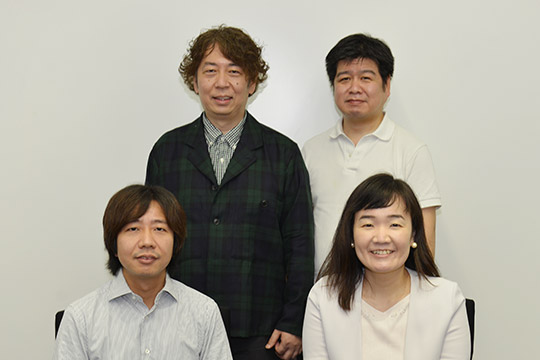
Toshiba Digital Solutions employees promoting the development and commercialization of ifLink.(from the left in the back row) Takehiro Yoshimoto, Akira Ishitsuka, (from the left in the front row) Riichi Fukuda, Chikako Yatsugake
- ※
- The corporate names, organization names, job titles and other names and titles appearing in this article are those as of August 2020.
Related articles
 Following links will open in a new window
Following links will open in a new window



